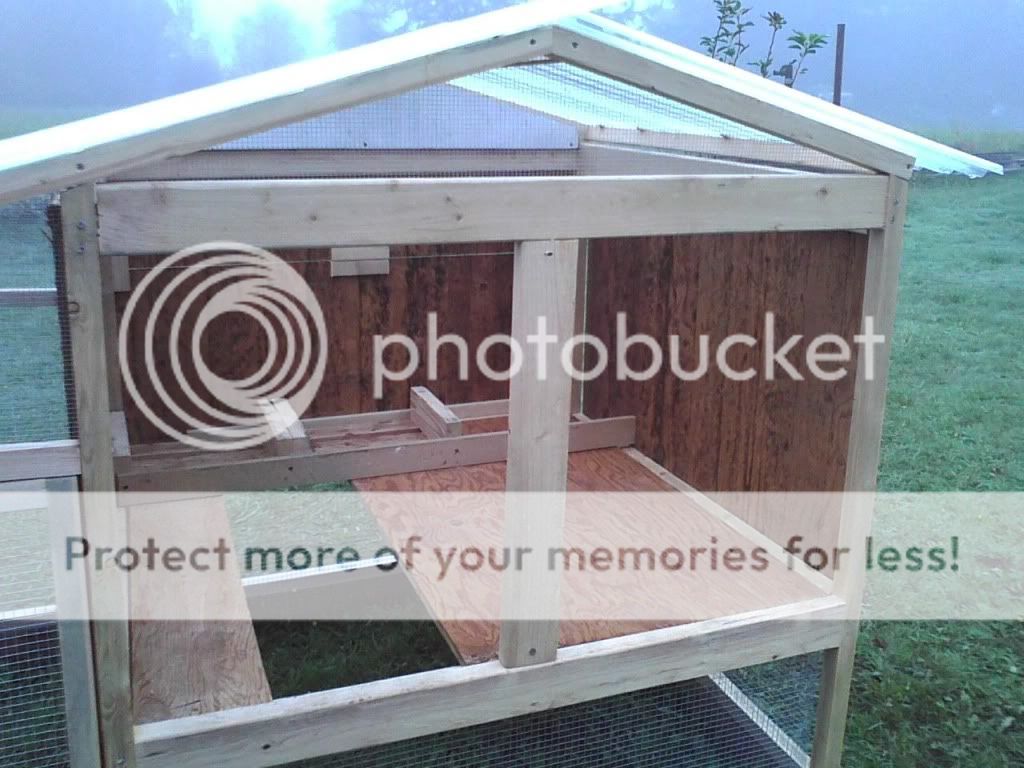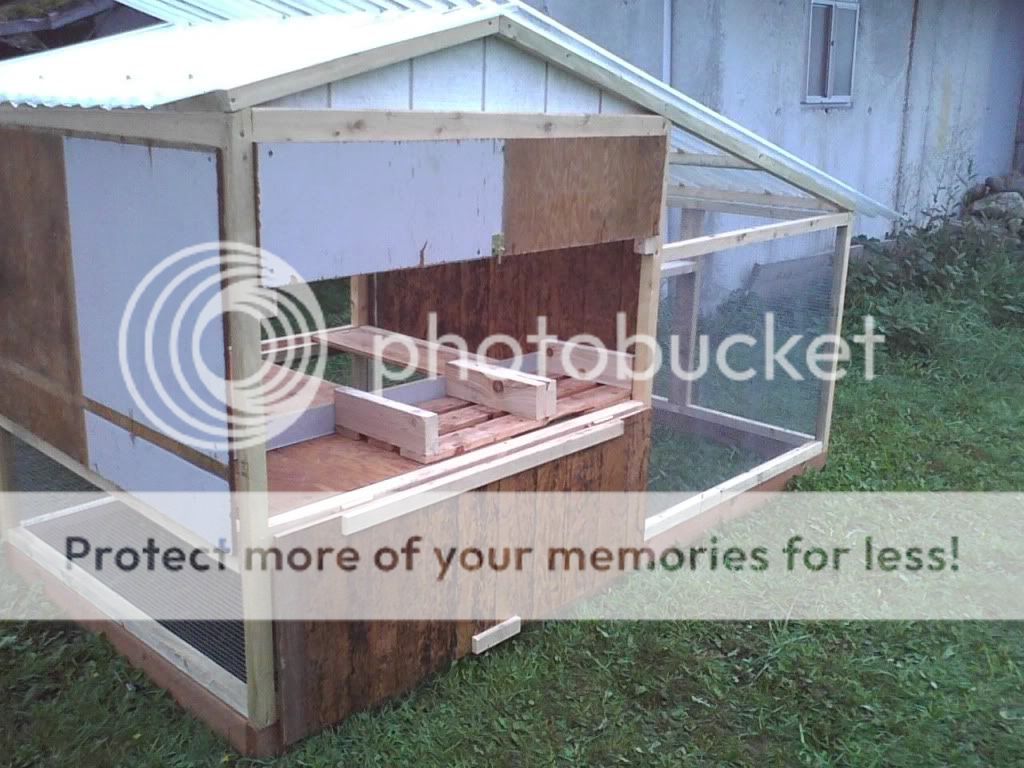You asked about poop disposal. Here is what I am doing. I made the floor of my coop into my compost pile. I throw in all kitchen scraps that would normally go into a compost pile (no meat or dairy). I built the coop on a dirt floor, added about 4 inches of woodchips and sawdust to start, and every few months I throw in just enough dirt or lawn clippings to cover the floor. Because the chickens scratch around in this litter for the food scraps they constantly turn things over--hence turning UNDER the fresh manure. This really helps with the smell. I will clean it out once a year in the spring and put it directly into my garden.
I have a 4x6 coop for 2 full sized hens and 3 bantams. I wouldn't want to have any less space inside. They also have a 26' x 20' outside run and, since they can fly over my short fence, they're completely free-range (bad news for my strawberries but good news for happy chickens!). I built the fence to keep my dogs out, not to keep the chickens in, but then I have the privilege of a rural setting.
The most important design factor for me was building my coop so that I do not have to go in where the chickens are. There is a separate section for me to stand in when I open their outside door (on a pulley). I open an interior door to fill their food and water and have the back of the nesting boxes open onto this people section to collect eggs. Since I'm using such deep litter and compost I really didn't want to stand in that to let them out, feed or water them, or collect eggs.
One suggestion--we built the coop coming out the back of the garage. We cut a door in the back wall and then built the coop as a lean-to. I LOVE this set-up since it means we aren't walking through rain/snow to get to the chickens yet they're farther away from our house. Also, it looks very nice as we had leftover siding so the coop matches the garage as if it were a lean-to shed.
Be aware of the smell. I grew up on a farm and poultry are the worst smelling of any animals, really. In summer your neighbors will be very unhappy with you if it is upwind of their house. You'll have to remove the poop often and have a way to dispose of it...or cover it frequently with sawdust, dirt, lawn clippings, etc.
Last recommendation--ventilation! Especially where you live. Chickens are far more susceptible to heat than cold. Of course there are breeds more suited to cold vs heat but, where you live with both cold winters and very hot summers (I lived near there for 4 years) I'd say the heat of summer may be your worse culprit. Chickens will happily go outside in the snow. But think about down insulation in coats and douvets--down and feathers are warm! Besides, you can easily add a heat lamp in winter but an air conditioner in summer isn't so feasible! Even in winter they need good ventilation as the ammonia will build up and condensation can cause frost bite.
Back to my childhood on the farm--the happiest animals were in barns with the best air flow, even in northern Michigan in winter. Avoid drafts (direct air on them) but be sure hot (and hence moist) air can escape out the roof ridge or under the eaves.
Good luck! I got back into chickens for my childrens' sake. It's a favorite family activity to watch the chickens--they are amazingly entertaining!






